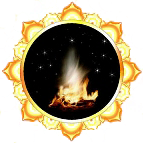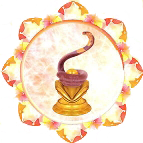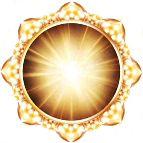Laya yoga
The Five Yantras of Laya Yoga
The path of wisdom (Prajna-yantra) presupposes mastery of a continuous contemplative state, immersion in the supreme Source (sahaja-sthiti). For this, the yogi trains in sitting and moving meditation.
The path of energy (Shakti-yantra) includes the practice of working with energy channels (nadis), winds (prana) and centers (chakras) to awaken the Kundalini, experience the nectar of immortality, exits of the subtle body, gaining continuous consciousness in samadhi, opening the four bliss and five spaces in the body.
The Illusory Body Path (Nidra Yantra) develops awareness in dreams and includes the practices of the illusory body and pure land in the context of the teachings of the subtle body path, illusory body yoga, pure land yoga, dream yoga, and sleep and clear light yoga.
The path of yoga of sound (Nada yoga) includes ten stages of focusing on inner sounds to achieve Nirvikalpa Samadhi and the practice where the yogi works with the unity of sound and void awareness.
The path of yoga of light (Jyoti yoga) involves secret methods of contemplating light, which in a short time generate light visions: deities, mandalas, spheres of light, etc. Exercising in contemplation, the yogi works with visions, successively going through four stages: "beginnings", "vessels", "growth" and "exhaustion".
Four levels of Teaching
There are four levels in the Teaching:
external;
interior;
secret;
transcendental.

It is very important to understand these four levels of the Teaching and not to confuse them.
The external level includes the universal Sanatana Dharma: the principle of the unity of all religions, the idea of universal Enlightenment and the transition to God-manhood, mythology, etc.
Advaita Vedanta belongs to the inner level, as a philosophical system on which the view is built.
The secret level includes the methods of Laya yoga of the Siddhas: contemplation, Kundalini yoga, Nada yoga, Jyoti yoga, Yoga of sleep and dreams, etc. These are the methods of direct absorption into the state of nonduality (Pratyaksha-advaita).
The transcendental level is beyond the name, form, words, methods - it is staying in an unsupported state of awareness (Niralambha), in the natural primordial state of the nature of Mind (Sahajya), outside of thoughts, evaluations and concepts (Amanaska).
Often novice practitioners, not understanding the depth, breadth and transcendence of the Teaching, see some small fragment of it and, on the basis of this fragment, try to form their own opinion, rigidly fixing the Teaching, not taking into account that it has several levels.
The first two of them are exoteric levels, they are accessible to the understanding of ordinary people. The third level is available to real sadhus, to those who have devoted themselves to sadhana and know a lot about retreats.
Finally, the deepest, unusually secret, transcendental heart essence of the Teaching is contained in the transcendental level - this is being in a natural state (Sahajya).
This state in itself is Enlightenment, it cannot be achieved by methods, it cannot be taught, it cannot be described by philosophy, it is impossible to talk about it without falling into mistakes, but it is possible to stay in it. The outer, inner and secret levels are needed only to plunge into this state.
The teachings of Laya Yoga are like a large, beautifully flowering tree, which has roots, and a trunk, and branches, and leaves, and flowers, and fruits. All the methods of the Teaching are located in their place, they are perfectly combined and harmoniously coexist in the Tree of the Teaching, without contradicting each other. Everything in it has its own function, purpose and purpose.
In order to understand Laya Yoga, you need to study the four levels of the Teaching, as well as the Tree of the Teaching, and see the difference in levels and the difference between roots, trunk, branches, flowers and leaves.
Laya yoga - the teaching of three freedoms
There are no theories in my mind
over which one should ponder,
There are no words, mantras and prayers in speech,
which should be spoken.
There are no actions and rituals in behavior,
which should be done.
Originally released
nine actions ...
What a joy!
What a joy!
Natural mind,
contemplating myself
plays thousands of dharmas spontaneously!
Traditionally, the teaching of Laya Yoga of the Siddhas is considered the highest, final, culminating "chariot", but not in the sense that it surpasses other teachings, but in that it is not connected with conventions, divisions and concepts and has the property of directly pointing to the ineffable the nature of Reality.
The teachings of Laya Yoga do not belong to any Hindu school or sect, nor is it an everyday, "everyday" religion. Laya yoga, being beyond words, methods and symbols, is the heart center of any spiritual tradition, revealing itself as its inner essence.
"Clever doing" in Christian hesychasm, the ecstasy of the Sufi, illogical attacks of Zen masters have the same basis - immersion in non-conceptual awareness, and this is the main principle of the teachings of Laya Yoga.
The Siddhi-Avadhutas, being beings abiding in immeasurable freedom, practiced Laya Yoga within various confessions: Hinduism, Buddhism, Sikhism, Daosism.
Often the teachings of Laya Yoga are called the teaching of "three freedoms", which means true freedom in the manifestations of body, speech and consciousness:
the body is allowed to be free from rituals of worship and any artificial norms of behavior;
the speech is allowed to be free from mantras, prayers and chants;
the mind is allowed to be free from being bound by philosophy, doctrinal theories or postulates.
"Allowed to be free" means that we practice in a state of contemplative presence, open awareness, like the sky and without any restrictions.
In this state, we can perform any actions that are instantly self-liberated upon manifestation, turning into a spontaneous play of body, speech and thoughts. Thus, any external manifestations from the point of view of Laya Yoga are a spontaneous play of activity (lila) and are not something unambiguously frozen, self-valuable or real.
A true laya yogi, being present, does nothing, being in non-action. While doing something, he is only playing, or at least trying to view his manifestations in this way.
This approach is entirely consistent with the way of life and practice of the great saint siddha-avadhutas of our lineage, it is also repeatedly described in classical texts.
“He accepts, like a child, all conditions that surround him, thanks to the desires of others.
Just as an innocent child is absorbed in his game without worrying about hunger, thirst or physical suffering, so the sage is absorbed in the game of his own self without ego consciousness and constantly enjoys in the Atman.
There is no code of laws or rules of conduct binding him, for he is completely free. Although dormant on earth, like a child or a madman, he remains always established in Vedanta. Mother earth is a flowering bed on which he lies. He sleeps fearlessly in the forest or in the cemetery, for his amusement and pleasure is in Brahman.
He, who is the universal "I", takes on countless forms at will and has countless experiences. In one place he behaves like a madman, in another - like a scientist, in the third - like a deceived one. In one place he moves like a man of the world, in another - like a king, and in another - like a beggar eating from the palm of his hand due to the lack of a begging bowl. In one place we adore him, in another we blaspheme. Thus, he lives everywhere and the Truth behind him cannot be realized by others.
Although he has no wealth, he is eternally blissful. While others may not help him, he is powerful in strength. Although he may not eat, he is eternally satisfied. He looks at all things impartially. Although acting, he is not acting, although he is eating, he is not the one who eats, although he has a body, he is incorporeal, although isolated, he is a single indivisible Whole.”
Sri Adi Shankaracharya, "Viveka Chudamani"
When we accept such views, this does not mean at all that we cannot follow any principles, rules, methods of practice, accept any statuses, obligations, etc.
A yogi who follows the highest Dharma is not conditioned by anything, and he is free to choose or accept those methods that help him in practice, or to manifest in the form, status that are close to him. If necessary, the yogi can perform prostrations, recite mantras and take vows, but his attitude towards them is completely different, different from the actions of ordinary "non-self-liberated" practitioners: the yogi sees them as a game (lila), and not as something self-sufficient. The difference here is about the same as the difference between the performance and ordinary "real" life.
Outwardly, there may be complete similarity, but in essence it is a distance the size of an infinite universe. The game does not mean something fake or frivolous. When we play, we are completely sincere and really give in to the practice process. The peculiarity is that we do not identify with the outside.
From this point of view, Laya Yoga can be adequately practiced within any spiritual tradition or within a traditional religion, not rejecting, but using its images, style or attributes as its heart.
This means that any Christian, Jew, Hindu, etc., can fully carry out the practice of Laya Yoga, without giving up those images, symbols and concepts to which he is accustomed.
It is important here to have a transmission in the methods of teaching, to have a connection with the Spiritual Teacher, the Master, and to master the methods of practice perfectly.
A similar approach exists among magicians, shamans in various world traditions. As a rule, magicians and shamans stand apart, aside from the "broad" religious paths, nevertheless, using their religious attributes for their practical purposes.
Shamans, magicians have schools, authoritative methods, but there is no attachment to nationality or identification based on religious affiliation. So, a fully self-respecting magician-healer working in the Orthodox tradition, without any embarrassment, can use witchcraft rituals of voodoo, if there is a practical need, and a Tibetan shaman can freely be simultaneously initiated into the tradition of magic of the Hopi Indians. By adhering to certain customs, symbols or principles, magician shamans demonstrate their flexibility on the way to achieving their goals.
The Siddhi Masters act in the same way, with the only difference that their goals do not lie in the plane of human interests, but immeasurably, much higher - in the transcendental.
A similar approach was demonstrated by many prominent ancient and modern saint siddhas: the Tamil siddh Boganatar, known in China as Bo-Yang, Sai Baba of Shirdi, who prayed in the mosque and in Hindu temples at the same time, Sri Ramakrishna, who "played" in various religions, Nim Karoli Baba, who venerated Hanuman along with Christ, the current Avatar Bhagavan Sri Sathya Sai Baba, Avatar Sri Satchitananda Ganapati and others.
Laya Yoga and Traditional Hinduism
When it is said that the Teaching of Laya Yoga is a tantric tradition of the Siddhas, it especially emphasizes its difference from the so-called traditional orthodox Hinduism with its caste system, four ways of life (ashrams), numerous gods, ritual practices, holidays and symbolism.
With great sympathy for traditional Hinduism, however, we clearly understand the difference between traditional "everyday" folk Hinduism, inherent in "ethnic" Hindus, and the tradition of the Siddhas.
Of course, not being ethnic Hindus, we, the Russian-speaking followers of Laya Yoga, can neither fully accept Hinduism, nor fully follow it due to the fact that we live in a completely different cultural environment.
However, from the point of view of the avadhuts, siddhas, yoga adherents and tantrism, this is not required, since the teaching of the siddhas is not, strictly speaking, Hinduism, but is beyond any cultural-ethnic, social, caste, tribal and other restrictions.
The Siddhi Avadhutas were not limited by the framework of their religion, culture, or the environment of their country, although they did not reject them. By their nature, they stayed in the global universal-cosmic Consciousness, integrating all spiritual paths, cultures and traditions into their vision.
Actually, the teaching of the Siddhas of Tantrism was not in following orthodox Hinduism, but, on the contrary, in liberation from its framework, conventions and restrictions. Sometimes for this the siddhis even committed a deliberate violation of the norms of traditional caste morality, ritual desecration, antisocial behavior, etc.
The living spirit of the Siddhas was based, first of all, on the practice of play, the freedom of natural awareness beyond any framework and prescriptions and the secret transfer of the Teacher-student.
As followers of the inner "secret path" of awareness, the siddhis could mimic and adapt to any religion, so as not to draw attention to themselves.
“During the day he appears to be a follower of Shiva, at night he follows the path of Shakti, attending meetings, he looks like a Vaishnav.”
Kularnava tantra
This explains the ease with which the siddhis reckoned themselves first to Buddhism, then to Hinduism, then to Islam and even to Christianity (as in the case of Saraha, Kabir, Sai Baba of Shirdi, Ramakrishna, Nim Karoli Baba and other saints).
This also explains the fact of veneration of the Siddhas simultaneously in Buddhism, Hinduism and other religions (Buddha, Matsyendranath, Gorakshanath, Charpatinath, Boganatar and others). For them, it was part of the divine game (lila), a way to hide their true transcendental timeless essence, independent of cultural conventions, from the curious and uninitiated, whose surface interest could not accommodate the depth of their consciousness.
Continuing the teachings of the Siddhas, following the spirit of their teachings and lineage in a different cultural environment, we still try to keep the line of teachings, secret yoga methods and spiritual connection with the Siddhas.
However, this does not mean at all that we should imitate ethnic Hindus or, moreover, be complex about the fact that we cannot do this well. This would be a big mistake from the point of view of the siddhas and a manifestation of our inflexibility, lack of knowledge of how to follow the spirit of the teachings. While maintaining contact with the transmission line, we should feel quite comfortable and adequately in our own cultural environment, harmoniously integrating all its values, achievements and traditions, nevertheless, preserving the purity of the transmission line - the living spirit of the Siddha Teachings.






